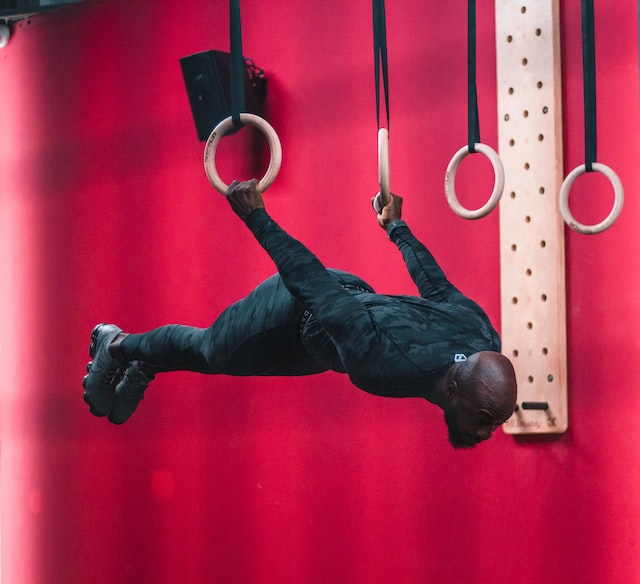Chapter 4: Linear Kinetics, Force and Newton’s Laws of Motion
Chapter 4: Linear Kinetics, Force and Newton’s Laws of Motion: Introduction
Authors: William Moebs, Samuel Ling, Jeff Sanny
Adapted by: Rob Pryce, Alix Blacklin

Whether we are performing an amazing feat of strength, a beautiful artistic movement, or just a simple activity of daily living our body produces forces and interacts with forces that act on it. When we move we have an expectation to be stable, but also to be able to control our movement by speeding up or slowing down. In all of these cases, we deal with forces. In one instance, the forces on the person in Figure 4.1 might be in equilibrium, so they stay balanced and in place. In another instance, they may produce unbalanced forces against the rings, allowing them to change position or perform a complex dismount. Finally, when they hit they land the ground will produce a force that acts on the body to slow their movement.
So, forces affect every moment of our life. Our bodies are held to Earth by force. When we open a door, walk down a street, lift a fork, or touch a baby’s face, we are applying forces. This chapter will help us understand how those forces interact with the human body.

